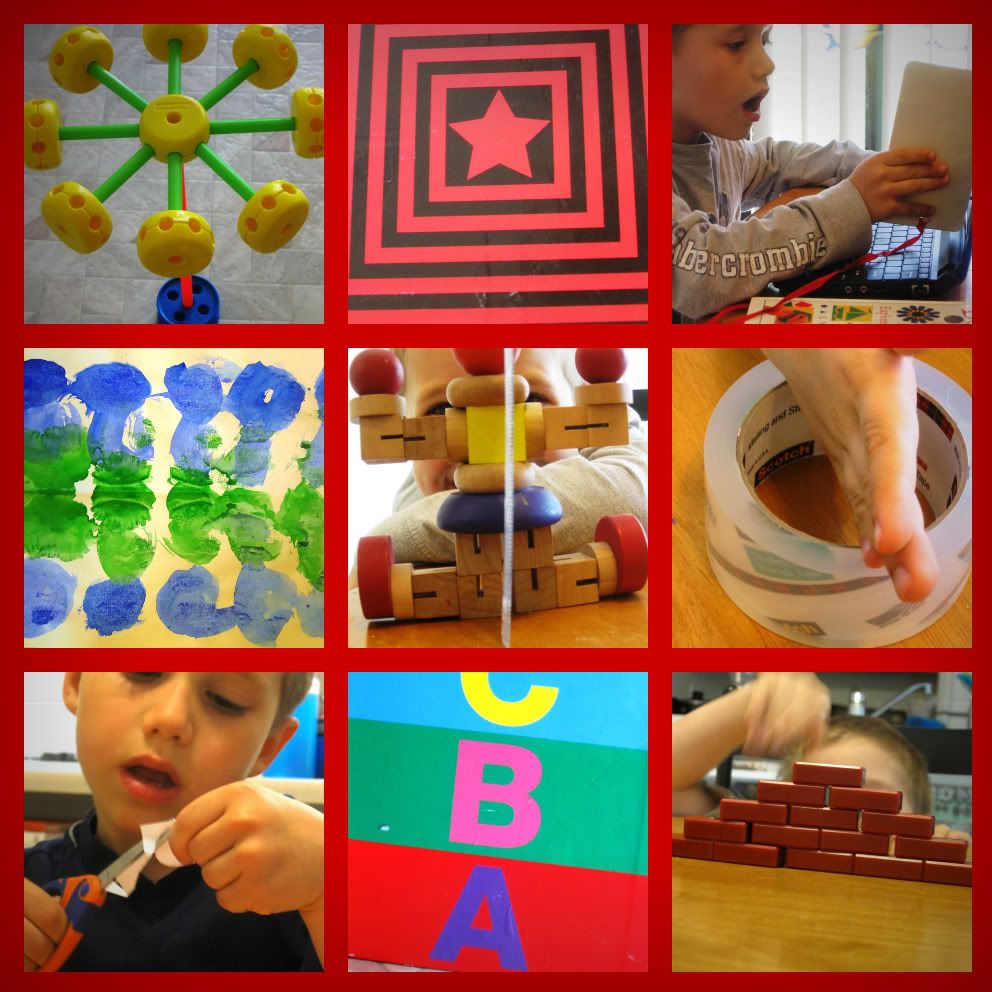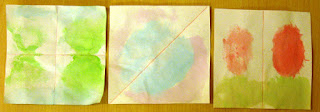In reality, no one can teach mathematics. Effective teachers are those who can stimulate students to learn mathematics. Educational research offers compelling evidence that students learn mathematics well only when they construct their own mathematical understanding.
-National Research Council, 1989
His toys spurred this little exploration on.
It was a little over two weeks ago when I suddenly noticed that all of Hunter's recent tinker toy creations were consistently, perfectly, accurately symmetrical.
And you know me. My mind started ticking and my fingers started googling. What are some fun activities to introduce the vocabulary behind the concept that, he obviously knew [hence the tinker toys], yet just didn't have the words or rules to describe it yet?
A little bit about our blooming adventure.
First we stumbled upon the Illustrated Lesson on Symmetry, courtesy of my google search. Very cool, informative, free. Hunter played this pretty much entirely on his own with very little coaching from me, and wanted to play again the next day. He used the reflecting mirror in The Amazing Book of Shapes to figure out which figures were symmetrical and which ones weren't.
We later learned that there are actually different kinds of symmetry, illustrated with stencils:
It was a little over two weeks ago when I suddenly noticed that all of Hunter's recent tinker toy creations were consistently, perfectly, accurately symmetrical.
And you know me. My mind started ticking and my fingers started googling. What are some fun activities to introduce the vocabulary behind the concept that, he obviously knew [hence the tinker toys], yet just didn't have the words or rules to describe it yet?
A little bit about our blooming adventure.
We later learned that there are actually different kinds of symmetry, illustrated with stencils:
Reflective symmetry, aka the dinosaurs, the kind we're most familiar with, which is basically the "mirror image" effect.
Glide reflective symmetry, aka the dogs, same as mirror effect except the reflected image is moved [glided].
Translational symmetry, aka the flamingos, is when an exact copy of an image is moved [translated].
Rotational symmetry, aka the palm trees, is when an exact copy of a figure is moved [rotated] around a center point.
Those red lines in all the drawings? That is the line of symmetry. We learned about that in the before mentioned game, that there are different kinds of lines of symmetry. Sometimes it is vertical, right down the middle, sometimes it's horizontal, sometimes diagonal, sometimes there is more than one line of symmetry. One day we made these folding-paintings (paint one side, then fold and press to "translate" symmetrical version to other side) to illustrate some different lines of symmetry:
Besides using the mirror and our eyes to point out reflective symmetry in a great many things around the house (and find things that were asymmetrical as well), the last activity / craft we did was these "snowflakes" (which thankfully turned out way cooler and more suitable to the season). Ours, after folding them only in quarters, had two lines of symmetry:
It was a really neat little spree of activities. And I think he had fun and definitely explored the vocabulary and depth of the concept more thoroughly.
Math sure is fun, isn't it?
"At that time Jesus answered and said, I thank thee, O Father, Lord of heaven and earth, because thou hast hid these things from the wise and prudent, and hast revealed them unto babes."
Matthew 11:25
Hunter is 5 years, 1 month old







No comments:
Post a Comment
Thank you for your comments!